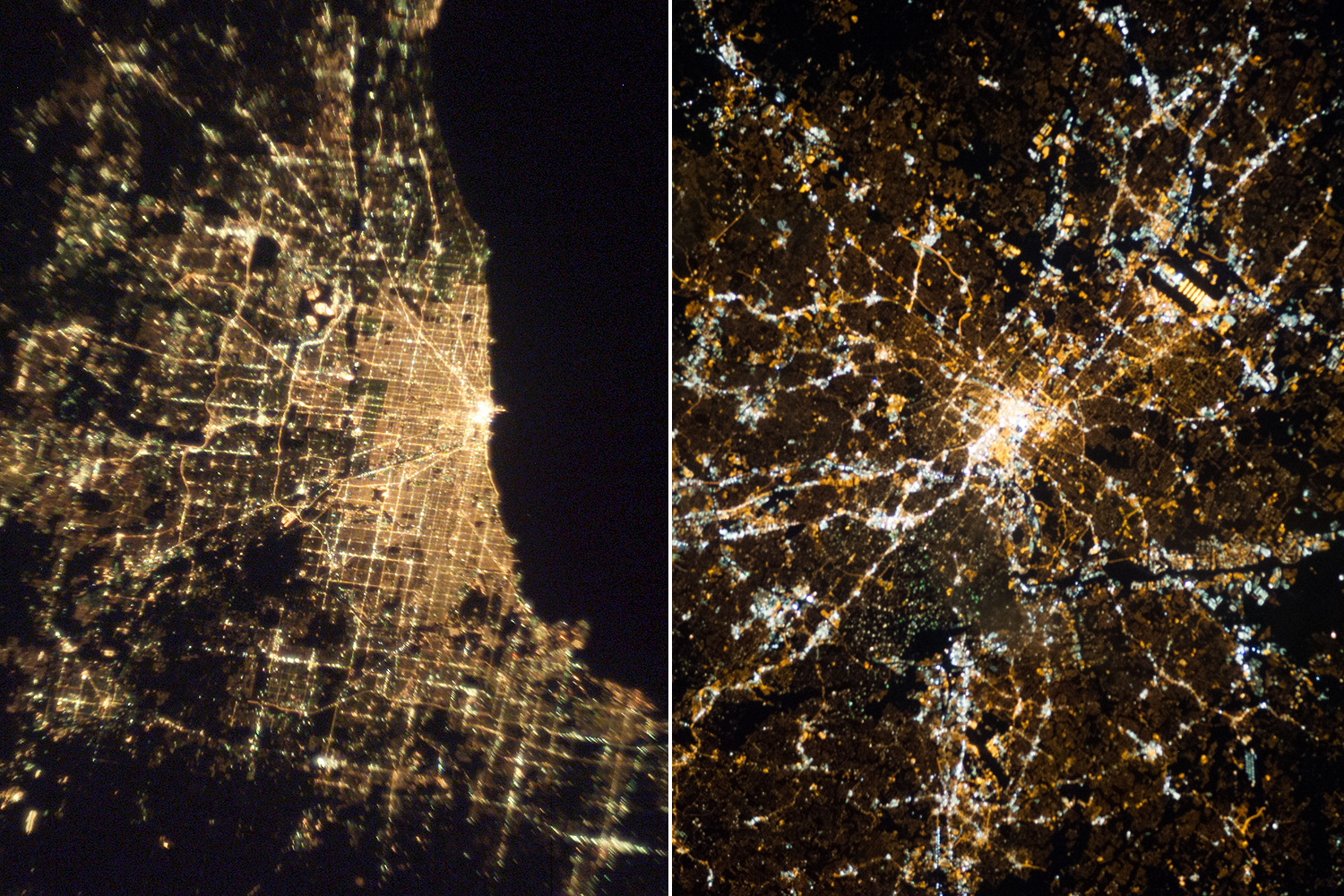My colleague Harry Sawyers, Chicago's web editor, grew up in the Atlanta area. His dad, who had to drive a couple dozen miles during the not-massive but very-ill-timed snowstorm, was stuck in traffic for eleven hours. It led Harry to mention an interesting idea for one of the many problems that coincided to cause Tuesday's disaster.
We know that Atlanta is a chaotic political patchwork, which afflicts infrastructure planning. We know it's sprawling and not entirely well-served by public transportation. We know it's Southern and doesn't keep an army of snow-removal trucks, and, even given all that, additional mistakes were made.
But Harry, who knows the area, brought up another point. Atlanta isn't merely sprawling. As a metro area, it's notable for its street hierarchy—cul de sacs feeding into collectors, arterials, and interstates—basically the opposite of Chicago's grid.
For a time, this street hierarchy was considered the best design to achieve admirable goals: a sense of community (which cul de sacs arguably achieve), traffic calming, and efficient, place-appropriate speeds from one point to another. It looks like a spaghetti mess, but there is a satisfying logic to it. The system is designed to funnel cars into high-capacity roadways, keeping drivers from using residential streets as through-routes. The grid is physically orderly; the street hierarchy is conceptually orderly.
But there's a problem with funneling. When the funnel clogs, it reduces the number of alternate routes, causing a "traffic heart attack." Think of how you can get around in Chicago—if someone wipes out and blocks an entire major artery, there are multiple routes to another one, usually in three or four directions.
The grid is a robust system; the street hierarchy is not. As the authors of Suburban Nation, a cornerstone for the New Urbanist movement, write:
[The grid] accomodates all the same components as the suburban model, but they are organized as a web, a densely interconnected system that reduces demand on the collector road. Unlike suburbia, the neighborhoods presents the opportunity to walk or bicycle. But even if few do so, its gridded network is superior at handling automobile traffic, providing multiple routes between destinations. Because the entire system is available for local travel, trips are dispersed, and traffic on most streets remains light. If there is an accident, drivers simply choose an alternate path.
Atlanta's connection-sparse road network, argues Atlanta Unbound author Carlton Wade Basmajian, also originates in the metro area's connection-sparse regional planning:
[B]ecause so much of metropolitan Atlanta's development was happening in unincorporated areas, a significant portion of the region's surface streets and neighborhood roads were laid out and constructed by individual landowners and developers, only being turned over to local government control once the lots in the residential development had been sold. The vast majority of these routes were designed to only serve specific land subdivisions, which meant that the internal street networks tended to be self-referencing and essentially fenced off (or cul-de-sac'd). Without governmental oversight, adjacent subdivisions were only rarely connected together.
[snip]
The ARC [Atlanta Regional Commission] was not in the business of building roads (or anything else), which meant that most counties were left with little alternative but to accept new residential roads as 'gifts' from private developers. As a result, aside from a few places, a secondary network of through routes did not emerge by accretion as in other regions of the country. In other words, the grid so common in many urban areas simply never came to exist in metropolitan Atlanta, a fact that forced distributed traffic patterns into a constrained system of arterials and freeways.
Much of the focus on urban connectivity has been on getting people out of cars and into trains, onto bikes, or just on your own two feet. And if it works, swell—it should be a boon for drivers, because those represent fewer cars on the road, and more ability to mode-shift when conditions are bad. But people still have to drive, and evidence suggests that higher connectivity is good for drivers, too, reducing traffic and driving distances. It's a more self-healing system, slow as it sometimes is, reducing the likelihood of the traffic heart-attack Atlanta's going through.



